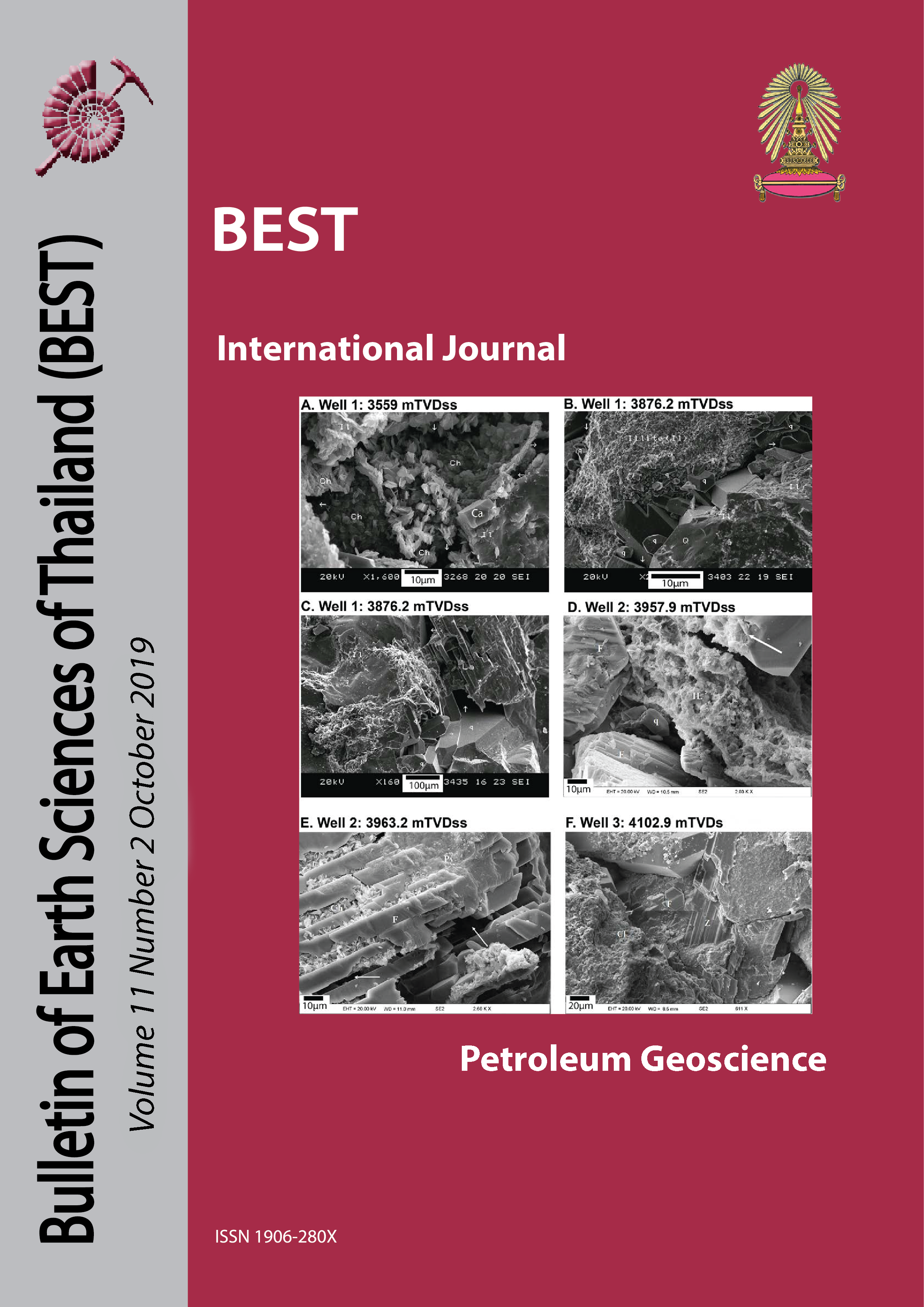Mapping reservoir geometry and interpretation of depositional environment by integrating seismic attributes with well data, Western basin, Gulf of Thailand
Main Article Content
Abstract
The study of reservoir geometry and depositional environment is necessary for petroleum exploration that will improve the accuracy and add more opportunity for hydrocarbon exploration. The study area is located in Western basin, Gulf of Thailand. The clastic reservoir unit is difficult to detect due to the control by geological structures especially faulting. This research integrates 3D seismic volumes, well log data, horizons interpretation and seismic attributes analysis to identify reservoir geometry and depositional environment. The reservoir unit termed Sand C is the main unit for reservoir detection and depositional environment interpretation which is located above the basement and below Sand B unit. The seismic volume in this study is full-stacked volume that cover 457 km2 and represent Sand C unit at range 1143-1780 milliseconds. The seismic attribute of a Structural oriented filter was used to interpret the seismic volume because the original volume contains seismic enhanced discontinuities and noise. The well data in study area comprise of 10 wells but only 4 wells which are CU-1, CU-2, CU-8, and CU-9 penetrate through Sand C formation. Each well log represents a conventional log data set for all wells are composed of; neutron log, density log, sonic log, spontaneous potential log, caliper log, gamma-ray log, and resistivity log. The reservoir geometry and depositional environment interpretation used the seismic attributes including RMS amplitude and Sweetness to extract images of reservoir features. The Sand C unit were detected by high amplitude of both RMS amplitude and Sweetness attribute that was controlled by faults in N-S direction and onlap onto the basement. The seismic reflector can identify Sand C unit formed in syn-rifting event which can be observed by wedge shape on reflector. The seismic attribute was evaluated using stratal slices to indicate the reservoir geometry that can identify the depositional environment by the seismic facies combined with the correlation to the well log analysis. The result of seismic interpretation integrating with well log analysis indicates that the Sand C unit was deposited in fluvial environment.
Article Details

This work is licensed under a Creative Commons Attribution-NonCommercial-NoDerivatives 4.0 International License.
Copyright © 2008 Department of Geology, Faculty of Science, Chulalongkorn University. Parts of an article can be photocopied or reproduced without prior written permission from the author(s), but due acknowledgments should be stated or cited accordingly.
References
Glover P., 2009, Petrophysics MSc Course Notes, Leeds University: UK, p.110.
Morley, C.K. and Racey, A., 2011, Tertiary Stratigraphy. In: The Geology of Thailand (Eds M.F. Ridd, A.J. Barber and M.J. Crow) Geological Society, London, pp.223-271.
Morley, C. K. And Charusiri P., 2012. Structural geology of Thailand during the Cenozoic Modern tectonic setting of Thailand, Geology of Thailand p.273 -328.
Ridd, M.F., Barber, A.J., and Crow, M.J. 2011. The geology of Thailand. The Geological Society of London, p. 244-248.
Salamander Energy, 2013, Bualuang Field Geological Report, Western Basin, Gulf of Thailand, Internal, Salamander Energy. Watcharanantakul, R., & Morley, C. K., 2000.
Syn-rift and Post-rift Modeling of the Pattani Basin, Thailand: evidence for a ramp-flat detachment. Marine and Petroleum Geology, v.17, p. 937-958.


